Text
Doubling down with the
Waaaah
Hey guys. Just want to give a quick update:
WAAAaAAAAAAh
Yup
7 notes
·
View notes
Text
Hey guys. Just want to give a quick update:
WAAAaAAAAAAh
Yup
7 notes
·
View notes
Text
Nothing more annoying than writers who write historical fiction but don’t want to put in the work to make it historically accurate. A couple minor anachronisms here and there are one thing, but that particular kind of weirdly smug disregard for historical accuracy is insufferable.
Just make it science fiction! Set it on an alien planet! Set it in the far future, or an alternate timeline, or some kind of warped preserved memory! Take that particular thing that interests you most about a period of history and slap it into another reality and worldbuild around it to your heart’s content… that’s cool. That’s fun. And it doesn’t have that taint of meanness towards the past that makes low-effort historical fiction so irritating.
912 notes
·
View notes
Text
I got called a “menace” in among us :3
3 notes
·
View notes
Text
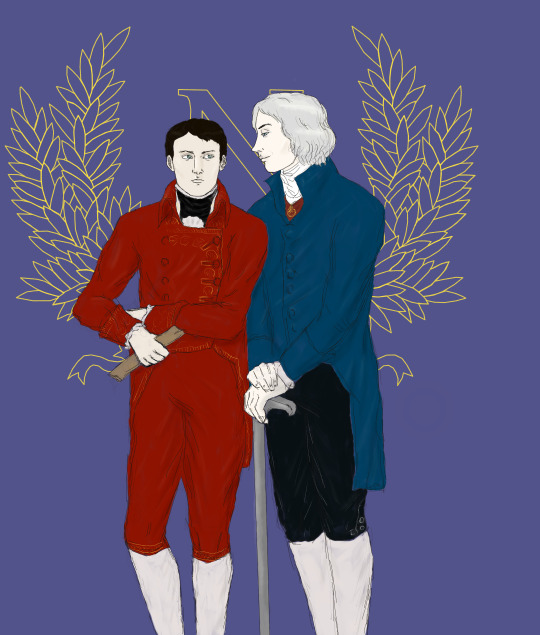
The First Consul and his foreign Minister

75 notes
·
View notes
Photo
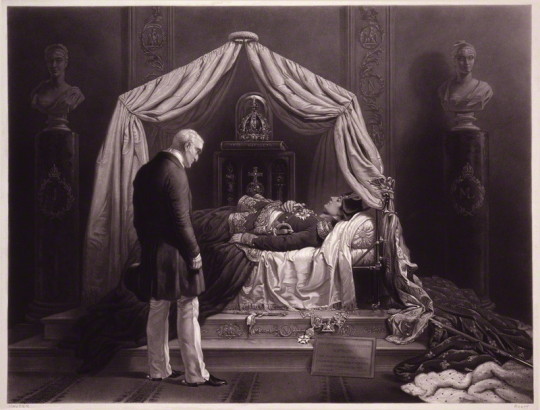
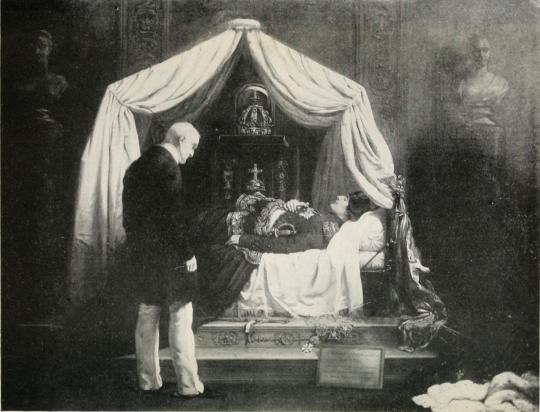
This is the Duke of Wellington looking at the effigy of Napoleon Bonaparte at Madame Tussaud’s around 1851 when the Great Exhibition opened.
Wellington was apparently a fan of wax sculptures and seemed to be a personal friend of Madame Tussaud herself. He often visited the new additions. One of exhibits of the Museum (which in Wellington’s lifetime was still located at the Baker Street Bazaar) was dedicated to Napoleon Bonaparte. Apart from Napoleon’s own wax figure, the exhibit also contained:
Napoleon Relics. — The camp-bedstead on which Napoleon died; the counterpane stained with his blood. Cloak worn at Marengo. Three eagles taken at Waterloo. Cradle of the King of Rome. Bronze posthumous cast of Napoleon, and hat worn by him. Whole-length portrait of the Emperor, from Fontainebleau; Marie Louis and Josephine, and other portraits of the Bonaparte family. Bust of Napoleon, by Canon. Isabey’s portrait Table of the Marshals. Napoleon’s three carriages: two from Waterloo, and a landau from St. Helena. His garden chair and drawing-room chair. “The flag of Elba.“ Napoleon’s sword, diamond, tooth-brush, and table-knife; dessert knife, fork, and spoons; coffee-cup; a piece of willow-tree from St. Helena; shoe-sock and handkerchiefs, shirt, &c. Model figure of Napoleon in the clothes he wore at Longwood; and porcelain dessert-service used by him. Napoleon’s hair and tooth, etc. (from the book the Curiosities of London)
A book called The History Of Madame Tussaud’s give us an account of Wellington’s visits to the museum and his special fondness for Napoleon’s exhibition:
Early one morning, soon after the Exhibition had been opened for the day, Joseph, Madame Tussaud’s son, who had been wandering through the rooms, as was his habit, perceived an elderly gentleman in front of the tableau representing the lying-in-state of Napoleon I. The model of the dead exile rested—as it does down to this very day—on the camp bedstead used by Napoleon at St. Helena, and was dressed in the favourite green uniform, the cloak worn at Marengo (bequeathed by Napoleon to his son) lying across the feet. In the hands, crossed upon the chest, was a crucifix. In those days it was the custom to lower at night the curtains that enclosed the bed, in order to exclude the dust, whereas now the whole scene is encased in glass.
Observing that the visitor was desirous of seeing the effigy, and no attendant being at hand, Joseph Tussaud raised the hangings, whereupon the visitor removed his hat, and, to his great surprise, Joseph saw that he was face to face with none other than the great Duke of Wellington himself.
There stood his Grace, contemplating with feelings of mixed emotions the strange and suggestive scene before him. On the camp bed lay the mere presentment of the man who, seven-and-thirty years before, had given him so much trouble to subdue. No feeling of triumph passed through the conqueror’s mind as he looked upon the poor waxen image, too true in its aspect of death; he rather thought upon the vanity of earthly triumphs, of the levelling hand of time, and how soon he, like his great contemporary, might be stretched upon his own bier.
Mr. Joseph Tussaud used frequently to recall this dramatic meeting between the Iron Duke and the effigy of his erstwhile foe, and to imagine the feelings of the old General as he gazed upon the couch. It was probably the first of the Duke’s many visits to the Exhibition.
A few days after this most interesting visit Mr. Tussaud, who was an old friend of Sir George Hayter, related the incident to that artist. Hayter was immediately struck with the potential value of the event for the production of a painting of the historic scene, and the Tussaud brothers at once commissioned him to execute the work for them. Sir George thereupon communicated the idea to the Duke, who readily responded, and offered to give the necessary sittings. We have the sketches made by Hayter in preparation for the work, and among them appears a drawing of Joseph Tussaud himself, although he does not enter the actual picture. Hearing that the artist was making progress with the painting, the Duke visited his studio, and, having expressed himself warmly in appreciation of the picture (the figures had been but lightly limned in at the time), said: “Well, I suppose you’ll want me to sit for my picture here?”
Hayter has given us a most characteristic portrait of Wellington as he then appeared. He is dressed in his usual blue frock-coat, white trousers, and white cravat, fastened with the familiar steel buckle. He stoops a little as was his wont, his head is lightly covered with snow-white hair, and his manly features are marked with an expression of mingled curiosity and sadness as, hat in hand, he looks upon the recumbent Napoleon. The picture was completed early in December, 1852, [after the Duke’s death] and has been on view in the Napoleon Rooms at the Exhibition ever since.
The engravings of the picture have been circulated in thousands throughout the world, and, strange to say, they are exceedingly popular in Austria. It is an interesting fact that the painting in question was the last portrait for which the Duke ever sat. When the Duke himself died, Madame Tussaud’s advertised “A full length model of the Great Duke, taken from Life during his frequent visits to the Napoleon Relics.“
169 notes
·
View notes
Text

EVERYONE
SHUT UP!
BE QUIET!
THIS NAPOLEON IS SLEEPING!!!!
63 notes
·
View notes
Text
If you can’t handle my napoleon when he’s at his invading your country you don’t deserve him at his being the bestest boy
27 notes
·
View notes
Photo
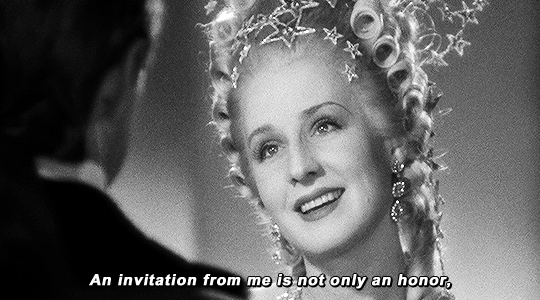
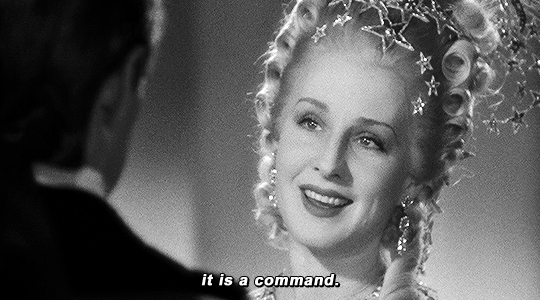
Marie Antoinette (1938), dir. W.S. Van Dyke
2K notes
·
View notes
Text
No offense but yall suck at lending him our power. Three notes?
My one friend
Is somehow having more trouble with his term papers than I am
Everyone!! Lend him!!! Our power!!!
20 notes
·
View notes
Text
My one friend
Is somehow having more trouble with his term papers than I am
Everyone!! Lend him!!! Our power!!!
20 notes
·
View notes
Text
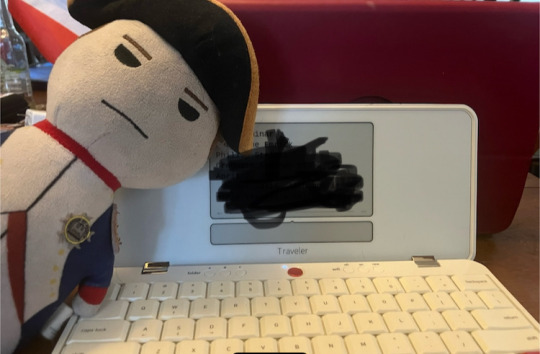
My napoleon is jealous because I’m paying more attention to my writing than I am to him. Silly Napoleon! I love you, I just also need to work sometimes!
42 notes
·
View notes
Text
How can I be expected to finish term papers when my dog is demanding butt scratches? Hmm? What am I meant to do? Let her butt remain unscratched? I’m not a monster!
5 notes
·
View notes
Photo

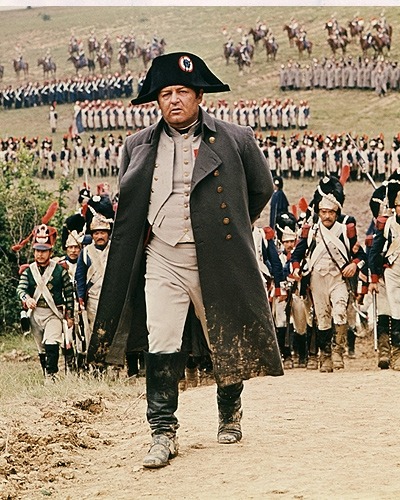


Waterloo, A Great Movie Battle Before CGI,
Filmmakers have it really easy today in comparison to back in the days when movies didn’t have special computer generated special effects. Back in the day, filmmakers were severely limited in what they could do because there was no way to create a computer generated monster or design an entire battlefield complete with soldiers. In order to create a scene, a director literally had to shoot the scene live complete with props, costumes, actors, and extras.
The 1970 film Waterloo, directed by Sergei Bondarchuck was an incredible film made in such as way. Today CGI technology has come a long way, I’m sure we all remember battle scenes from the Lord of the Rings Trilogy where due to the imperfection of CGI, here and there you see a soldier at the edges of a formation continuously swinging his sword at thin air. The technology has improved greatly, but still, you can tell its fake. It looks a bit cartoonish, the characters seem a bit mechanical and lifeless, it just doesn’t look real. The magic of Waterloo was that it features a huge battle, but unlike modern films, it was completely reenacted using real extras with real special effects. The result is one of the most amazing feats of cinematic wonder in history.

Waterloo was originally conceptualized by the Italian producer Dino De Laurentiis, however he originally had difficulty finding a director for the film and financial backers because it was such an enormous undertaking. Fortunately for De Laurentiis, he met the Soviet filmmaker Sergei Bondarchuck, who apparently had some very important connections. What kind of connections did he have? Ones that were influential enough to convince the Soviet government to lend an entire division of the Soviet Army as extras. To reenact the battle, 17,000 Soviet soldiers were donated for the film, 15,000 as infantry and 2,000 as cavalry. It was the largest battle reenactment ever filmed in movie history, with Gettysburg coming in second with 13,000 reenactors.
For two months before filming began, the Soviet soldiers lived in a camp on the “battlefield” where they conducted basic training in order to become Napoleonic French, British, or Prussian soldiers. The men learned how to march like Napoleonic soldiers, learned battle formations and tactics, and learned how to fire flintlock muskets. During this time the soldiers also grew proper Napoleonic era facial hair.

In addition to the use of the extras, Bondarchuk recreated the Waterloo battlefield in detail at the filming site at Uzhorod, Ukraine. To do this, three hills were completely removed, 5,000 trees were transplanted, five miles of road were laid, four historic buildings were recreated, six miles of underground piping was laid to create mud at various places, and fields of wheat, rye, barley, and wildflowers were sown. To film the battle five 100 foot tall towers were construction, which were used in conjunction with helicopters.
Filming lasted 28 weeks and cost a sum of $38 million dollars, it was expected that the cost would have been three time higher if filmed outside of the Soviet Union. When adjusted for inflation, $38 million in 1970 money is worth around $263 million today. Indeed it was a very high budget film. The result is an incredible movie with incredibly real looking scenes. The soldiers act and move like real people because they are real people, the air is thickened with real gunsmoke from the hundreds of cannon and thousands of muskets being discharged. The smokey and hazy battles of black powder warfare is really not something that is often portrayed in today’s movies, and it give the movie a very dark and gritty feel. It is truly a cinematic masterpiece that dazzles the eyes and amazes the senses. Perhaps one of the most incredible scenes was a recreation of Marshal Ney’s cavalry charge, involving 2,000 cavalry extras and thousands British soldier extras who form square formations. The resulting scene is like no other movie battle scene.
youtube
As for historical accuracy, Waterloo stays faithful to the actual events of the battle pretty well. There are some small inaccuracies, but they are fairly minor and do not detract from the movie. The Dutch and other German allies are conspicuously absent despite accounting for half of the allied forces on the battlefield, but unfortunately Waterloo has always been depicted as a British battle. One thing is for sure, they don’t make them like they used to, and they probably never will again. Peashooter recommends.
1K notes
·
View notes
Photo

In the same way that early 19th century British caricaturists portrayed Napoleon Bonaparte as a devilish tyrant, British parents and teachers used Napoleon as a threat to scare children into good behaviour during the Napoleonic Wars. […]
Betsy Balcombe, an English girl who befriended Napoleon when he was in exile on St. Helena, noted in her memoirs:
The earliest idea I had of [him] was that of a huge ogre or giant, with one large flaming red eye in the middle of his forehead, and long teeth protruding from his mouth, with which he tore to pieces and devoured naughty little girls, especially those who did not know their lessons.
English humorist Gilbert à Beckett described Napoleon’s malign effect on his life at a preparatory school near Kensington in 1815.
Bonaparte had just escaped from Elba, and Miss Frounce, like an admirable politician, took advantage of this important event to overawe the ‘young gentlemen from three to eight’ who were under her guidance. On all occasions, Bonaparte was held up as the great bugbear, and there was not a boy in the school who was not firmly convinced that Miss Frounce had Napoleon under her thumb – that, in fact, if any of ‘the young gentlemen’ should prove refractory, Miss Frounce had it in her power to send for Bony with as much facility as she could order the sweeps or the dustman. If a boy, when spelling, knocked an i out of the word annihilate, he was threatened with being handed over to the tender mercies of Bonaparte; and every one of the pupils of Miss Frounce felt assured that, if Napoleon invaded England, he would knock at the door of the ‘establishment for young gentleman from three to eight’ the very morning after his arrival. […]
Such impressions as those I have related are strange and absurd; but there are many now living who, if they happened, during the time of the Bonaparte panic, to be inmates of a preparatory school […] will recognize the fidelity of the feelings I have described.
Boney the Bogeyman: How Napoleon scared children (Shannon Selin)
152 notes
·
View notes
Text
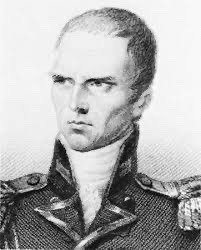
Mmm. *sultry voice, and picture me draped dramatically across a couch* And how am I going to pay for my crimes against humanity, stud?
7 notes
·
View notes